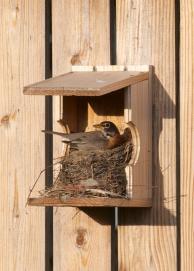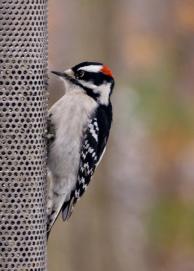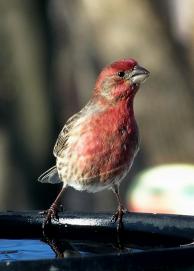Ruby-throated Hummingbird

"Where are all of my hummingbirds?" This is the question that has been asked more this spring and summer than any other. Most of you have been waiting and watching your feeders to no avail. Some have had no hummers whatsoever, and some have seen one or two birds for just a day or two, then they disappear. Of course, there are the fortunate few (and you know who you are) that have loads of hummingbirds at their feeders and come in and buy eight boxes of nectar mix at a time!
We really don’t know why this is happening. Is it because of the cool, rainy spring? Did some catastrophe occur during migration? Or are the birds being picky this year? We just don’t know. What we do know is that our best chance to see our little friends is still ahead of us. In this part of Missouri, the best time to see hummers is actually at the end of summer, between the end of July and the last week of September. This is when we still have our resident adults, their young that have fledged, and some early migrants from farther north. If you aren’t familiar with the color patterns of the male, female and juvenile you might think that you have three different species of hummingbird in your yard. The males are bright green with a black gorget that shines brilliant red in sunlight. The females are the same as the males except that they are white throated. Juveniles are a grayish-green, and possibly have black spots or rows of black spots that flash red on their throats.
The first time that I saw a hummer in my yard was at the end of summer. We had friends over after church and we were keeping an eye out for an oriole to show up at the oriole feeder. I noticed that there was a small dark speck hovering in and out at the feeder. When I looked with my binos, I had my first Ruby-throated hummingbird in my yard. I ran out and bought a hummingbird feeder and soon I had two or three, even on my deck.
Don’t give up hope! Not only is this a good time to see Ruby-throated hummingbirds, you should keep an eye out for migrants from the west. Look for a hummer that looks like a shiny copper penny, with or without an orange gorget. A Rufous hummingbird is the most common vagrant that goes through our area, but Anna’s, Calliopes, and Green Violet Ears have been documented in Missouri. If you see one, you might want to snap a picture and don’t hesitate to let us know! Vagrants are more noticeable later in the season, in October after most of the resident Ruby- throats have left. Leaving your feeder out past October into November will NOT keep hummingbirds from migrating, in fact you may be helping a late-hatching youngster build up enough stored energy for the trip south!
Shop Hummingbird
Mark's Spotlight
-

American Gold Finch
Read more about the American Goldfinch -

American Robin
Read more about the American Robin -

Black-Capped Chickadee
Read more about the Black-Capped Chickadee -

Downy Woodpecker
Read more about the Downy Woodpecker -

House Finch (Male)
Read more about House Finch -

Northern Cardinal
Read More about Northern Cardinal
Under Construction!
We have more birds and information coming soon! Thank you for your patience!






